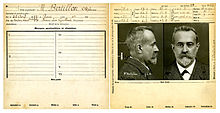
Phrenology is a pseudoscience which involves the measurement of bumps on the skull to predict mental traits. It is based on the concept that the brain is the organ of the mind, and that certain brain areas have localized, specific functions or modules. It was said that the brain was composed of different muscles, so those that were used more often were bigger, resulting in the different skull shapes. This led to the reasoning behind why everyone had bumps on the skull in different locations. The brain "muscles" not being used as frequently remained small and were therefore not present on the exterior of the skull. Although both of those ideas have a basis in reality, phrenology generalized beyond empirical knowledge in a way that departed from science. The central phrenological notion that measuring the contour of the skull can predict personality traits is discredited by empirical research. Developed by German physician Franz Joseph Gall in 1796, the discipline was influential in the 19th century, especially from about 1810 until 1840. The principal British centre for phrenology was Edinburgh, where the Edinburgh Phrenological Society was established in 1820.

Cesare Lombroso was an Italian criminologist, phrenologist, physician, and founder of the Italian School of Positivist Criminology. Lombroso rejected the established classical school, which held that crime was a characteristic trait of human nature. Instead, using concepts drawn from physiognomy, degeneration theory, psychiatry, and Social Darwinism, Lombroso's theory of anthropological criminology essentially stated that criminality was inherited, and that someone "born criminal" could be identified by physical (congenital) defects, which confirmed a criminal as savage or atavistic.

Physiognomy is the practice of assessing a person's character or personality from their outer appearance—especially the face. The term can also refer to the general appearance of a person, object, or terrain without reference to its implied characteristics—as in the physiognomy of an individual plant or of a plant community.
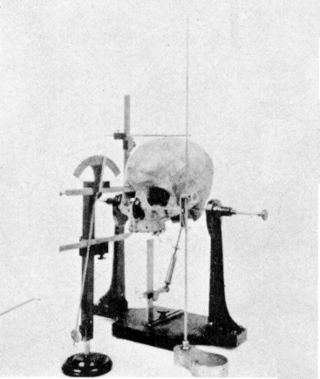
Craniometry is measurement of the cranium, usually the human cranium. It is a subset of cephalometry, measurement of the head, which in humans is a subset of anthropometry, measurement of the human body. It is distinct from phrenology, the pseudoscience that tried to link personality and character to head shape, and physiognomy, which tried the same for facial features. However, these fields have all claimed the ability to predict traits or intelligence.

Alphonse Bertillon was a French police officer and biometrics researcher who applied the anthropological technique of anthropometry to law enforcement creating an identification system based on physical measurements. Anthropometry was the first scientific system used by police to identify criminals. Before that time, criminals could only be identified by name or photograph. The method was eventually supplanted by fingerprinting.
Social degeneration was a widely influential concept at the interface of the social and biological sciences in the 18th and 19th centuries. During the 18th century, scientific thinkers including Georges-Louis Leclerc, Comte de Buffon, Johann Friedrich Blumenbach, and Immanuel Kant argued that humans shared a common origin but had degenerated over time due to differences in climate. This theory provided an explanation of where humans came from and why some people appeared differently from others. In contrast, degenerationists in the 19th century feared that civilization might be in decline and that the causes of decline lay in biological change. These ideas derived from pre-scientific concepts of heredity with Lamarckian emphasis on biological development through purpose and habit. Degeneration concepts were often associated with authoritarian political attitudes, including militarism and scientific racism, and a preoccupation with eugenics. The theory originated in racial concepts of ethnicity, recorded in the writings of such medical scientists as Johann Blumenbach and Robert Knox. From the 1850s, it became influential in psychiatry through the writings of Bénédict Morel, and in criminology with Cesare Lombroso. By the 1890s, in the work of Max Nordau and others, degeneration became a more general concept in social criticism. It also fed into the ideology of ethnic nationalism, attracting, among others, Maurice Barrès, Charles Maurras and the Action Française. Alexis Carrel, a French Nobel Laureate in Medicine, cited national degeneration as a rationale for a eugenics programme in collaborationist Vichy France.
Articles related to criminology and law enforcement.

The Italian school of criminology was founded at the end of the 19th century by Cesare Lombroso (1835–1909) and two of his Italian disciples, Enrico Ferri (1856–1929) and Raffaele Garofalo (1851–1934).

The Positivist School was founded by Cesare Lombroso and led by two others: Enrico Ferri and Raffaele Garofalo. In criminology, it has attempted to find scientific objectivity for the measurement and quantification of criminal behavior. Its method was developed by observing the characteristics of criminals to observe what may be the root cause of their behavior or actions. Since the Positivist's school of ideas came around, research revolving around its ideas has sought to identify some of the key differences between those who were deemed "criminals" and those who were not, often without considering flaws in the label of what a “criminal” is.

The feminist school of criminology is a school of criminology developed in the late 1960s and into the 1970s as a reaction to the general disregard and discrimination of women in the traditional study of crime. It is the view of the feminist school of criminology that a majority of criminological theories were developed through studies on male subjects and focused on male criminality, and that criminologists often would "add women and stir" rather than develop separate theories on female criminality.

Enrico Ferri was an Italian criminologist, socialist and student of Cesare Lombroso, the founder of the Italian school of criminology. While Lombroso researched the purported physiological factors that motivated criminals, Ferri investigated social and economic aspects. He served as editor of the socialist daily Avanti! and, in 1884, saw his book Criminal Sociology published. Later, his work served as the basis for Argentina’s penal code of 1921. Although at first he rejected the Italian dictator Benito Mussolini, Ferri later became one of Mussolini and his National Fascist Party's main external supporters.
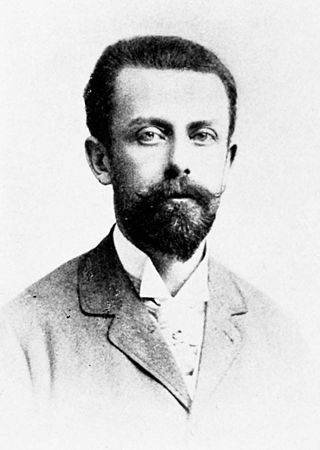
Raffaele Garofalo was an Italian criminologist and jurist.
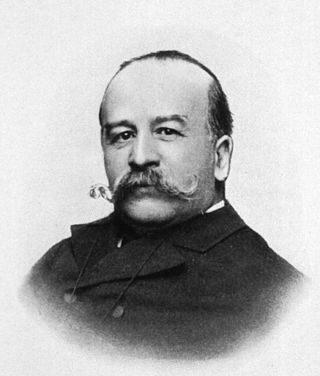
Alexandre Lacassagne was a French physician and criminologist who was a native of Cahors. He was the founder of the Lacassagne school of criminology, based in Lyon and influential from 1885 to 1914, and the main rival to Lombroso's Italian school.
Nicole Hahn Rafter was a feminist criminology professor at Northeastern University. She received her Bachelor of Arts degree from Swarthmore College in Pennsylvania, achieved her Master of Arts in Teaching from Harvard University, and obtained a Ph.D. in Criminal Justice from State University of New York in Albany. She began her career as a high school and college English professor and switched to criminal justice in her mid-thirties.
Somatotype is a highly disputed taxonomy developed in the 1940s by American psychologist William Herbert Sheldon to categorize the human physique according to the relative contribution of three fundamental elements which he termed somatotypes, classified by him as ectomorphic, mesomorphic, and endomorphic. He created these terms borrowing from the three germ layers of embryonic development: The endoderm,, the mesoderm, and the ectoderm. Later variations of these categories, developed by his original research assistant Barbara Heath, and later by Lindsay Carter and Rob Rempel, are still in occasional academic use.

Criminology is the study of crime and deviant behaviour. Criminology is an interdisciplinary field in both the behavioural and social sciences, which draws primarily upon the research of sociologists, political scientists, economists, psychologists, philosophers, psychiatrists, social workers, biologists, social anthropologists, as well as scholars of law.
The history of anthropometry includes its use as an early tool of anthropology, use for identification, use for the purposes of understanding human physical variation in paleoanthropology and in various attempts to correlate physical with racial and psychological traits. At various points in history, certain anthropometrics have been cited by advocates of discrimination and eugenics often as part of novel or based upon pseudoscience.
Die Psychologie des Verbrechers – Kriminalpsychologie was a book written by Dr. med. Paul Pollitz and published in Leipzig, Germany, in 1916. It is a summary of previous findings on psychological, social and economic characteristics of criminals for a variety of different crime types based on the statistics of the early 20th century. The focus lies on three main causes for committing crimes, which can interact or are presented in solitude. These causes depict crimes as a result of socio-economic circumstances, impaired psyche, and/ or personality of the criminal.

The Criminal is a book by Havelock Ellis published in 1890. A third revised and enlarged edition was subsequently published in 1901. The book is a comprehensive English summary of the main results of criminal anthropology, a field of study which was scarcely known at the time of the publication of the volume. The criminal is the first book published by the author and helped establish his reputation in the scientific world.
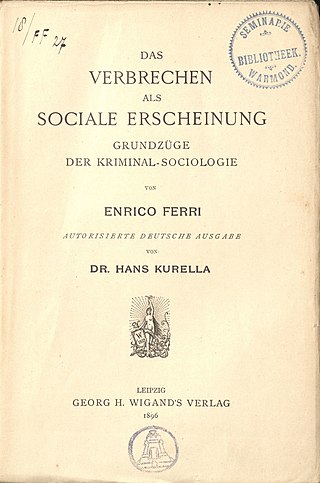
Das Verbrechen als soziale Erscheinung; Grundzüge der Kriminal-Sociologie was written by Enrico Ferri and originally published in 1884, but has undergone several revisions since then. It deals with Ferri's perspective on criminal sociology and problems of penology. The book is known as Ferri’s most important work and represents the positive school of criminology.

